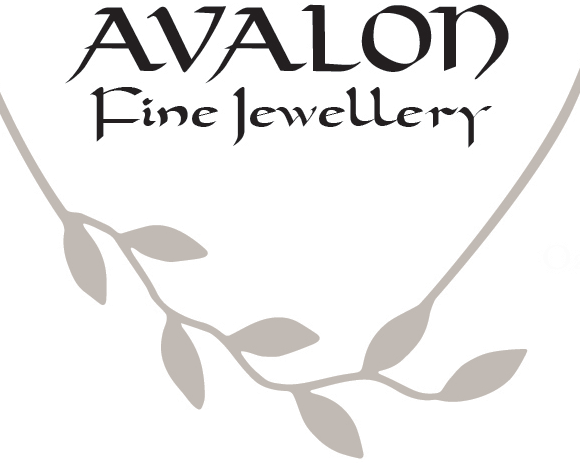The lure of estate jewellery
Timeless style, dazzling gemstones and a story behind each piece... What's not to love about vintage jewellery?
Antique and vintage jewellery is becoming increasingly popular today, especially with young brides. The unique character, design and history of these pieces heightens the romance. Wearing a ring that is truly exclusive to you and not commercially available to everyone else is part of the appeal as well.
Purchasing pre-owned jewellery offers an excellent return on investment as list prices are much lower than new jewellery of similar value. Vintage pieces are usually very well made and hold their value, allowing them to be passed down to future generations.
Antique vs. vintage
To be considered a genuine "antique", a piece of jewellery must be at least 100 years old. Otherwise, if it is at least 20 years old, it is referred to as "vintage". Any piece of jewellery that has been previously owned is considered "estate" jewellery.
Historical eras
Most heirloom jewellery available today falls into four time periods, each era with its own very distinctive style. It's helpful to understand the various motifs and materials associated with each time period.
Victorian: 1835 - 1890
Victorian jewellery is known for its romantic, feminine details, often with intricate metalwork. Sentimental pieces like lockets and miniature portrait brooches were very popular. Shell and agate cameos were surrounded by fine gold filigree. Mourning jewellery became fashionable after the death of Queen Victoria's husband Albert. Dark stones like jet and sombre jewellery encompassing a loved one's hair were prominent for many years during her reign. Rose cut, Old Mine cut and Old European cut diamonds were set along side other gemstones like sapphire, garnet, amethyst and spinel.
Edwardian: 1890 - 1915
When Queen Victoria died, her son Edward took over the throne, bringing with him a period of elaborate designs in jewellery. Diamond and pearl jewellery embellished with brilliant gemstones such as ruby, sapphire and emerald set in lavish decorative platinum mountings. This period encompasses both the Arts and Crafts (a return to simple patterns and intricate craftsmanship) and Art Nouveau movements. Graceful stylized motifs of birds, insects and nature along with lacy details were prevalent during the Art Nouveau period. This category of jewellery is among the most valuable and most sought after by collectors. The first World War brought an abrupt end to most jewellery making as materials became difficult to find.
Art Deco: 1918 - 1935
After the end of World War I, women were becoming increasingly independent and the "Roaring Twenties" brought renewed interest in fashion and jewellery. Bold contrasting colours, strong lines and geometric shapes were featured during this period. Chokers and long necklaces featuring amber, imitation pearls and Venetian glass beads were fashionable with the flapper set. The Art Deco era introduced white gold and round brilliant cut diamonds to the world. Exquisite diamond and gemstone bracelets and dazzling engagement rings from this period are coveted by collectors worldwide.
Mid-century/Retro: 1940 - 1960
Inspired by Hollywood glamour, Retro jewellery in the 1940's was elaborate, colourful and over-the-top. Charm bracelets, large cocktail rings and doublets were trendy at the time. After the end of World War II, styles moved back to more simplistic designs with an emphasis on the gemstones rather than intricate settings. Solitaire diamond engagement rings gained popularity, particularly with "fancy cut" stones - emerald, pear and marquise cuts.
Vintage reproductions - How do I know if it's authentic?
Reproductions of pieces from all of these eras are readily available. These designs are inspired by past decades and made to be sold as true reproductions with no deception intended. There is a large market for these items due to lower prices.
It is, however, important to know what you're buying and not assume the piece is authentic to a specific period just because it looks like it came from the past. There are several clues to watch for when buying vintage jewellery. The most obvious indication of a reproduction is price. If it sounds too good to be true, it likely is!
Hallmarks inside the piece reveal gold purity and designer signature, as well as sometimes location and date of manufacture. The quality of these engravings is an indicator of whether or not the piece is authentic. Does the maker's mark use the correct font? Are the letters straight and stamped clearly? Does the origin of the piece correlate to the designer's manufacturing facility?
Craftsmanship techniques, usage of appropriate materials as well as specific gemstone cuts correspond closely to each time period. However, just because a piece has all the design elements associated with a particular period doesn't necessarily mean it is authentic to that era.
Making the distinction between fine quality and commercial grade materials is also key and requires a trained eye. A knowledgable jeweller or gemologist is your best bet to validate a piece if you're not sure of its legitimacy.
Designer style
Many collectors gravitate to signed designer pieces - names like Tiffany, Cartier, Van Cleef & Arpels, Boucheron and Bulgari - because of the status value associated with the design house. The numerous famous clients of these designers only add to the allure.
Iconic pieces such as the Cartier "Love" bangle shown at right, or the Van Cleef & Arpels "Alhambra" motif, have endured the test of time and are still popular in the modern jewellery market.
Several prominent designers who made names for themselves, often as leaders in technical and aesthetic originality, are also collectable - Georg Jensen, David Yurman, John Hardy and David Webb to name a few.
The acquisition of a designer piece requires comprehensive knowledge and careful examination. Purchasing from a reputable dealer is essential to ensure you're actually getting what you're paying for.







